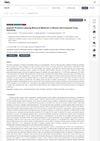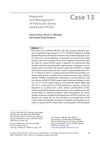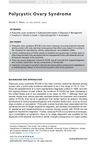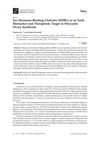Female Pelvic Conditions: Polycystic Ovary Syndrome
April 2022
in “
PubMed
”
polycystic ovary syndrome PCOS hyperandrogenism oligo-ovulation anovulation polycystic ovaries ultrasonography combination oral contraceptives COCs weight loss acne hirsutism spironolactone finasteride aromatase inhibitor letrozole gonadotropin-releasing hormone analogues ovulation birth control pills acne treatments Propecia GnRH analogues

TLDR Polycystic ovary syndrome (PCOS) affects about 10% of women, is often linked to obesity and family history, and can cause irregular periods, fertility issues, and other symptoms. It's usually managed with lifestyle changes, weight loss, and medication.
Polycystic ovary syndrome (PCOS) affects approximately 10% of women of reproductive age in the United States, with obesity and a family history of PCOS being the main risk factors. Diagnosis is considered for women with irregular or absent menstrual cycles, hyperandrogenism-related issues, or infertility, and requires two of the following three factors: oligo- or anovulation, clinical and/or biochemical signs of hyperandrogenism, and polycystic ovaries identified on ultrasonography. Treatment primarily involves lifestyle changes to achieve weight loss and the use of combination oral contraceptives (COCs). A weight loss of 5% to 10% can decrease PCOS symptoms. Medical or surgical management of obesity may be necessary. COCs provide endometrial protection and help manage acne and hirsutism. Routine acne treatments, topical cosmetic treatments, spironolactone, or finasteride may improve hirsutism. Infertility is a common issue in patients with PCOS, with the aromatase inhibitor letrozole being the first-line treatment for PCOS-related anovulation. Gonadotropin-releasing hormone analogues are also used to induce ovulation.




